



Arithmetic permutations and combinations are being calculated as India inches closer to the Lok Sabha elections. The country will head for polls in seven phases from April 11 to May 19. The counting of votes will happen on May 23.
Prime Minister Narendra Modi-led Bharatiya Janata Party (BJP) is hoping to retain power along with its National Democratic Alliance (NDA) partners. They are being challenged by the Indian National Congress-led United Progressive Alliance (UPA) and other Opposition parties.
Multiple opinion surveys have predicted the possibility of a hung Parliament. They also predict that the BJP, which nearly swept northern India in the 2014 Lok Sabha polls will face heavy losses there. Therefore, to offset those losses, the saffron party is trying to make inroads into eastern, north-eastern and southern India.
Here’s a look at how the northern states voted in the 2014 Lok Sabha polls:
Punjab
NDA parties Shiromani Akali Dal (SAD) and the BJP won six out of the 13 seats in the state. SAD won four of those seats.
While the Congress managed to perform better here than many of the other states in north India, it still managed to win only three. This included the Amritsar Lok Sabha seat where Captain Amarinder Singh defeated senior BJP leader Arun Jaitley.
The Aam Aadmi Party (AAP), which had become popular in Delhi by then, won the remaining four seats in the state.
In terms of the vote share, the SAD and BJP picked up 26.4 percent and 8.8 percent votes respectively. Contesting in all 13 seats, Congress and the AAP secured votes shares of 33.2 percent and 24.5 percent, respectively.
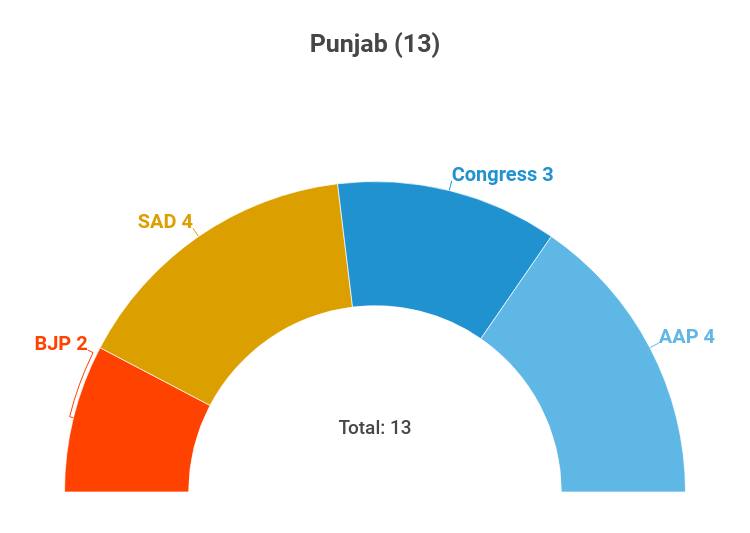
Haryana
Months ahead of the Assembly election in the state, the BJP managed to reverse its fortunes in this state. BJP won seven out of the 10 seats here, up from none in 2009. In 2009 general election, Congress had bagged nine seats here. However, in 2014, its tally fell to just one. The Indian National Lok Dal (NLD) won the remaining two seats.
In terms of the vote share too, the Congress was placed behind the INLD. BJP won 34.8 percent of the votes. INLD and Congress secured 24.4 percent and 23 percent votes, respectively.
AAP, which was making its debut in the state, failed to win a single seat despite securing 4.3 percent of the votes.
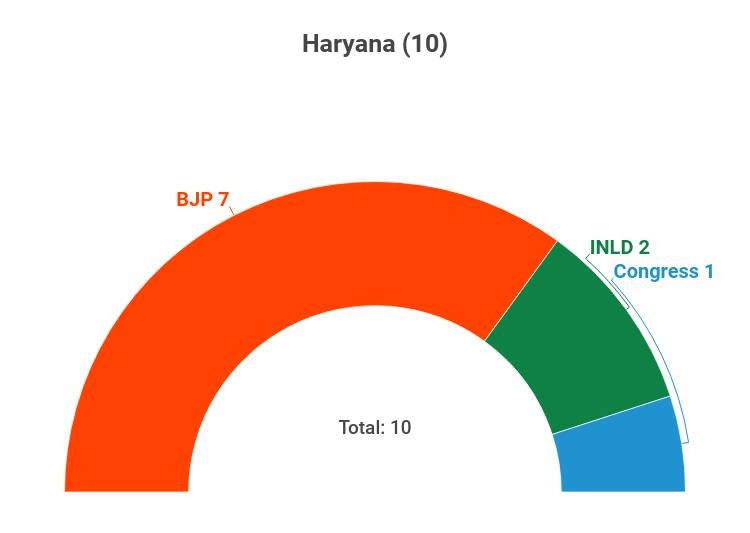
Himachal Pradesh
This northern state was one of those that were swept by the BJP. The saffron party won all of the four constituencies here. Congress finished second in all four seats.
BJP’s vote share was 53.9 percent, significantly higher than Congress’ 41.1 percent.
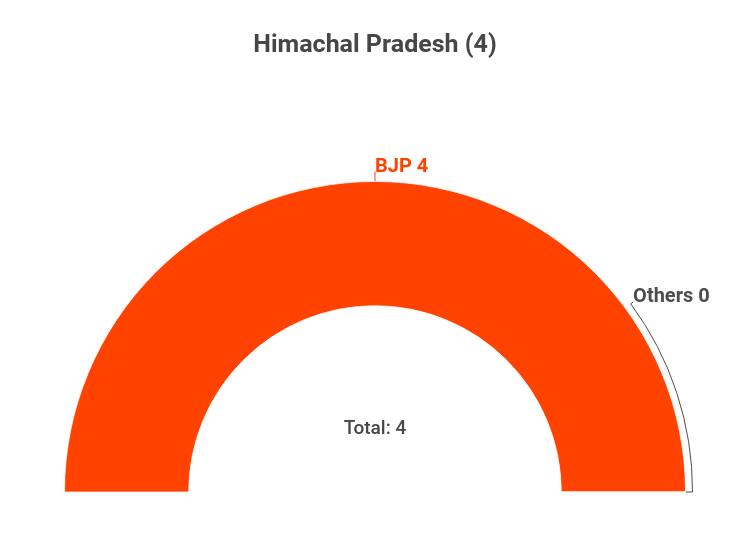
Uttarakhand
Similar to its performance in Himachal, the BJP swept all of the five seats in Uttarakhand. Congress was placed second in all of these seats.
The vote share of the two parties was 55.9 percent and 34.4 percent.
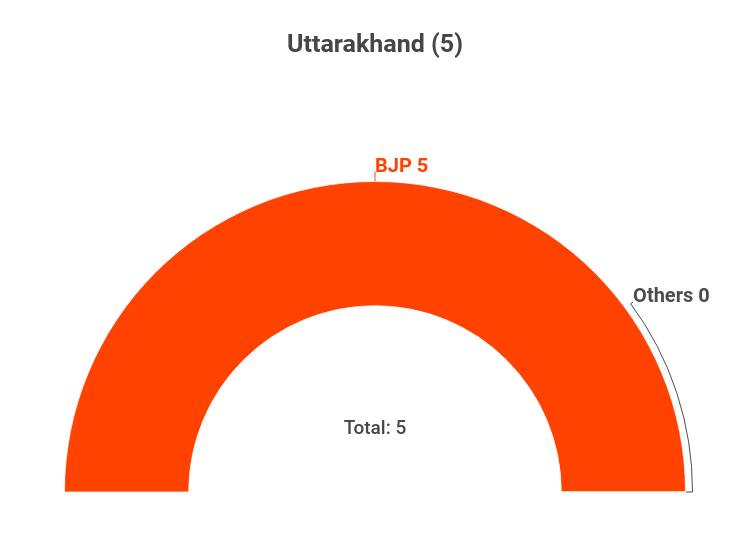
Jammu and Kashmir
The northern-most state of India has a total of six Lok Sabha constituencies. The BJP managed to win three seats here — Jammu, Ladakh and Udhampur.
The Jammu and Kashmir Peoples Democratic Party (PDP) won the remaining three — Anantnag, Baramulla and Srinagar.
The Congress and Farooq Abdullah’s National Conference (NC) faced a rout.
BJP and the PDP secured 32.6 percent and 20.7 percent of the votes. Congress and the NC managed to pick up 23.1 percent and 11.2 percent of the votes in the state.
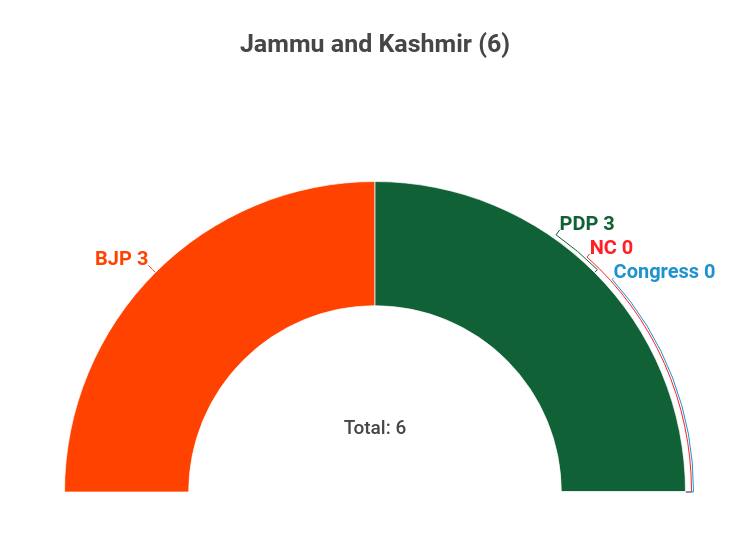
Uttar Pradesh
The results in Uttar Pradesh surprised many. Samajwadi Party (SP), Bahujan Samaj Party (BSP) and Congress faced a drubbing at the ballots at the hands of the BJP and its ally Apna Dal. Uttar Pradesh has a total of 80 seats.
Akhilesh Yadav-led SP’s tally fell to five seats from what was 23 in 2009. Mayawati’s BSP failed to win a single seat. BSP had won 20 seats in 2009. The Congress, which had won 21 seats in the previous general election was restricted to the Gandhi family bastions of Amethi and Rae Bareli.
All of these losses were direct gains for the NDA. The BJP alone won 71 out of the 80 seats in the state, up from just 10 seats in 2009. Apna Dal won two seats.
In terms of the vote share, BJP was first with 42.6 percent. SP, BSP and Congress secured 22.3 percent, 19.8 percent and 7.5 percent votes, respectively.

Chandigarh
The Union Territory is one of India’s major bellwether seats when it comes to Lok Sabha polls. The constituency has successfully voted for the party which eventually goes on to form the government at the Centre.
In 2014, BJP fielded actress-turned-politician Kirron Kher. Kher defeated former union minister and Congress leader Pawan Kumar Bansal. The lone seat there was won with a margin of around 70,000 votes. The seat also saw actress Gul Panag contest on an AAP ticket. While Panag finished third, she managed to give a tough fight to the incumbent MP.
Also read: A look at India’s bellwether seats — whoever wins these, wins the election
Delhi
Delhi has a total of seven Lok Sabha constituencies. This was a complete role reversal for the two major national parties, BJP and Congress. BJP won all of the seven seats there that were held by the Congress.
While the AAP did not win a single seat there, its vote share was 33.1 percent, more than double that of the Congress. The BJP secured a vote share of 46.6 percent votes.
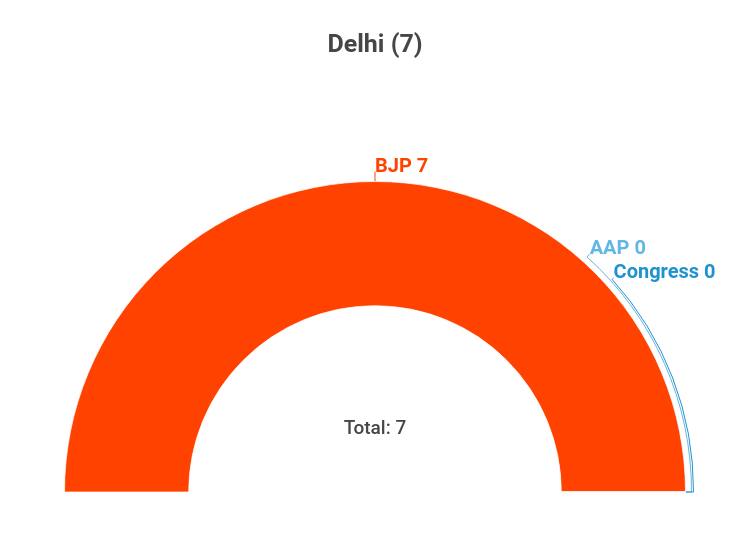
Discover the latest Business News, Sensex, and Nifty updates. Obtain Personal Finance insights, tax queries, and expert opinions on Moneycontrol or download the Moneycontrol App to stay updated!
Find the best of Al News in one place, specially curated for you every weekend.
Stay on top of the latest tech trends and biggest startup news.